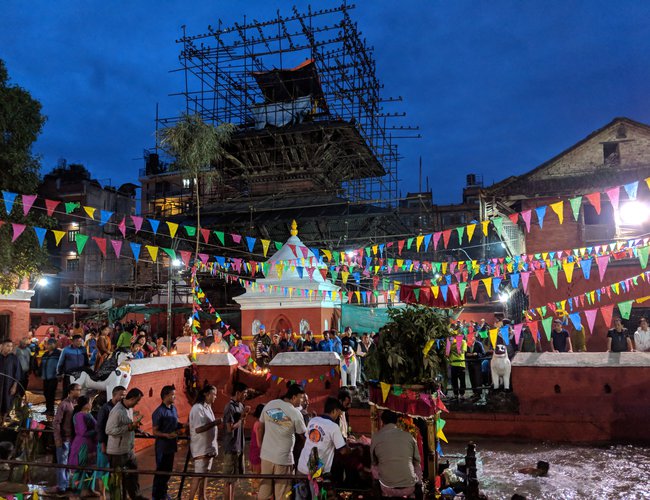
From early in the morning, thousands of Hindu devotees gathered at Kumbheshwar Temple and take a dip at the pond. Shamans of the valley also gathered to perform their ancient rites in Kumbeshwar in Patan.
Kumbheshwar is one of the oldest temples, situated 200m from the northern part of Patan Durbar Square. It was built in the 14th century (around 1392) by King Jayasthiti Malla that makes it the oldest temple in Patan. It is one of the two free-standing five-storied temples, the other being the famous Nyatapola temple of Bhaktapur. The temple is noted for its graceful proportions and fine woodcarvings and is dedicated to Shiva, as indicated by the large Nandi, or bull, facing the temple.
The Kumbheshwar Temple lies in a complex that includes many other structures: Bagalamukhi Ulmanta Bhairava and two hiti ponds among the most notable ones. It is a popular belief that the water spring that fills the ponds originates all the way from Gosainkunda, which is located 43 kilometers north of Kathmandu. So taking a dip in the pond during the festival Janai Purnima is equivalent to doing the same in Gosainkunda. Shiva’s mount, the bull Nandi is kneeling in front of the main Kumbheshwor Temple. High above the wooden roof tiers look as if they might topple over on this five storey building.
How Patan (Lalitpur) got its name from Kumbheshwar
According to Wikipedia, the story goes that a farmer with leprosy from Kathmandu came here because the grass was better for his cow. One day he struck his wooden pole into the ground and discovered a water source. That evening on his way back he saw the king passing by. He stepped off the road as was the custom for someone with leprosy. The king however saw no trace of the disease. Indeed the king found the man so handsome that he gave him a new name "Lalit" or handsome. The king knew a miracle had occurred and asked Lalit what happened. Lalit showed the king where he found the water source and the king pronounced that a hiti (meaning house) should be placed there. Thus, the place was called Lalitpur(meaning the land of fine arts and fine people). Another story tells of a man who lost his water vessel on a pilgrimage who found it again at the Kumbheshwar. The word Kumbha in Kumbheshwar means "water vessel". Whether any of the above is anything more that legend is up for debate. The fact that there is a water source from the himalayan mountains (Gosainkunda) at Kumbheshwar may yet be another contributing factor. Perhaps Patan got its name from all of the above combined.
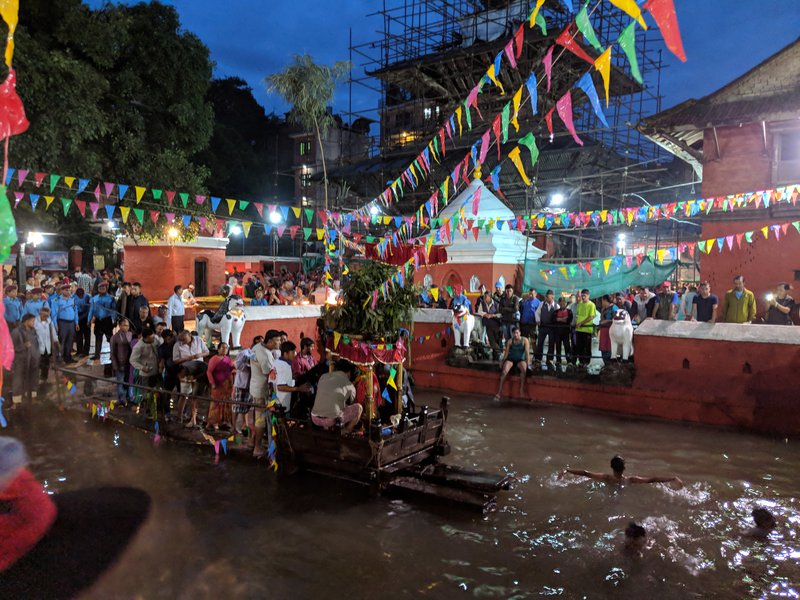
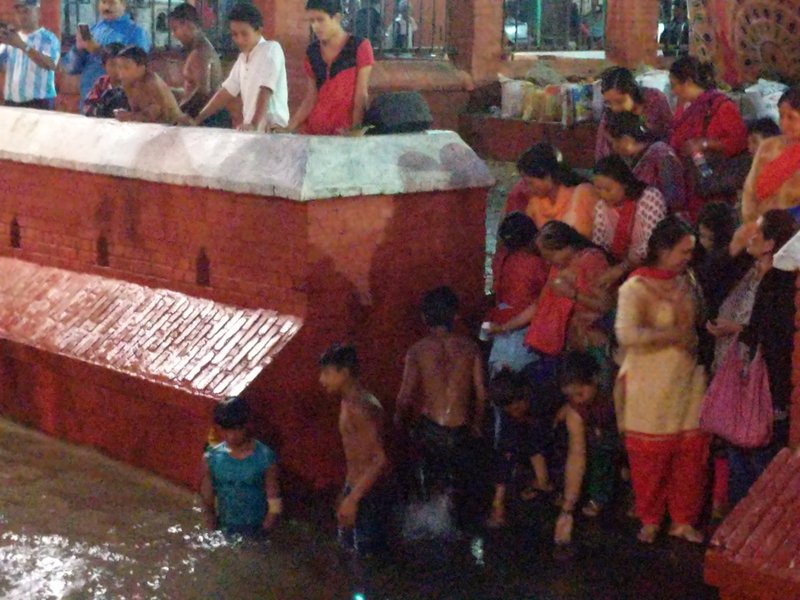
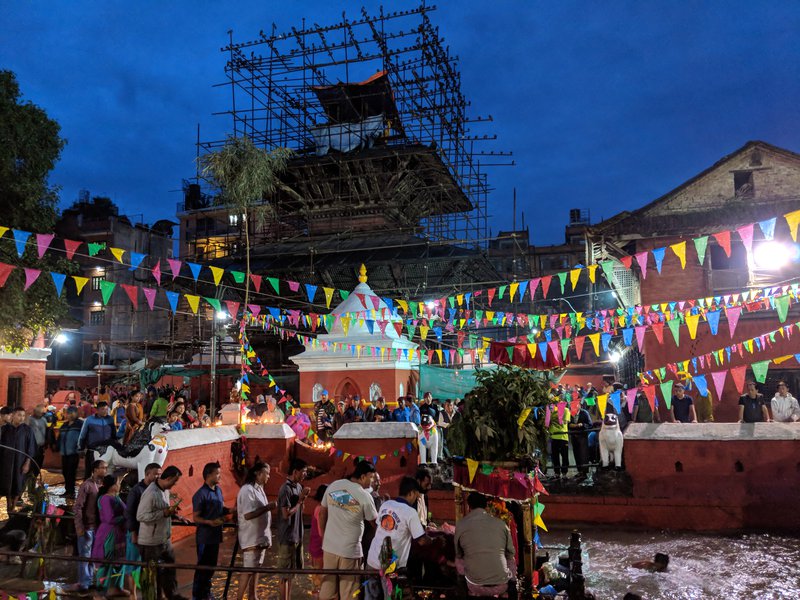
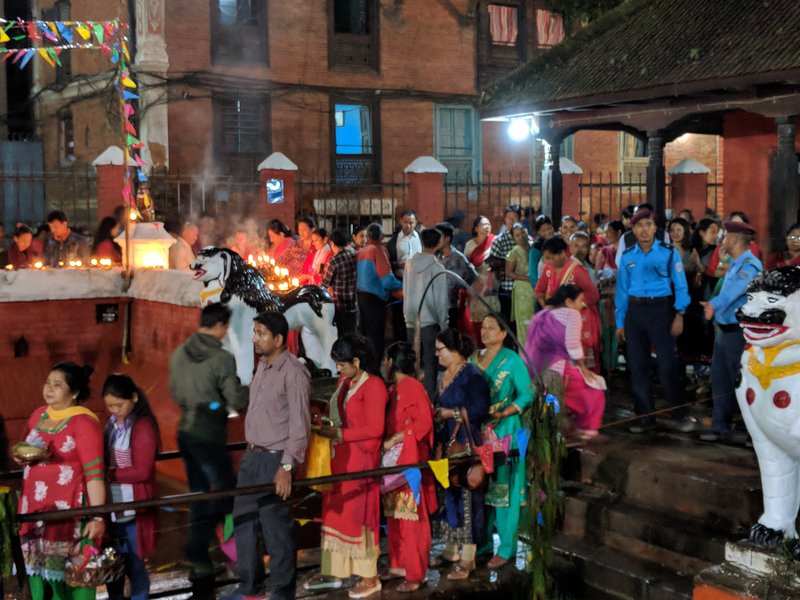
- The Situation Pushes Women Journalists To Speak Louder, Experts Emphasize
- Jun 30, 2025
- SPI NEPAL: Prosperity Through Clean Energy
- Jun 30, 2025
- PM Oli Meets Spanish Prime Minister
- Jun 30, 2025
- FM Dr. Rana Said Nepal recognises constitutional guarantees to citizens' right to food
- Jun 30, 2025
- Weather Forecast: Generally Cloudy With Heavy Rainfall Is Likely In One Or Two Places Of Kathamandu, Biratnagar And Pokhara
- Jun 30, 2025















